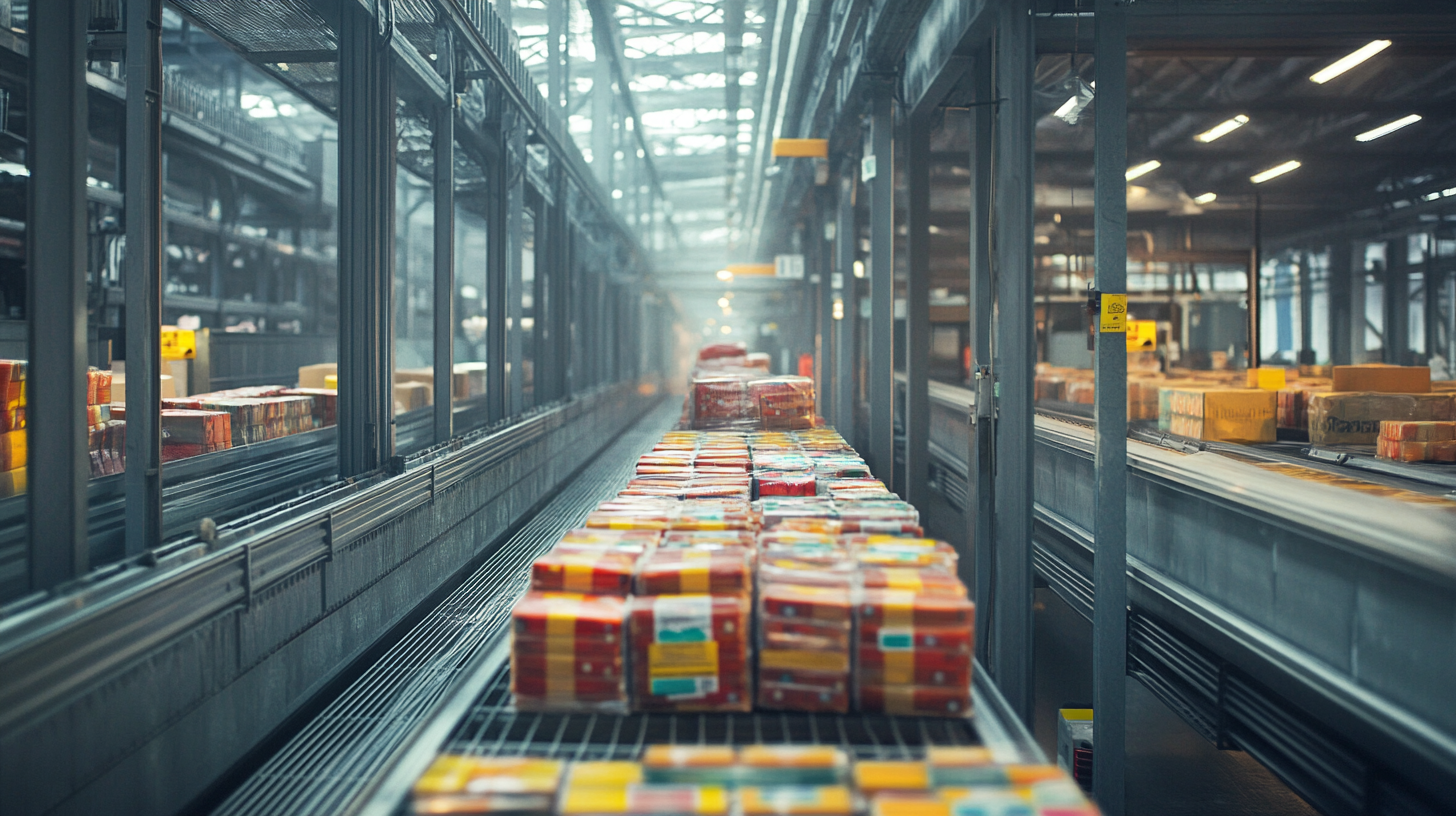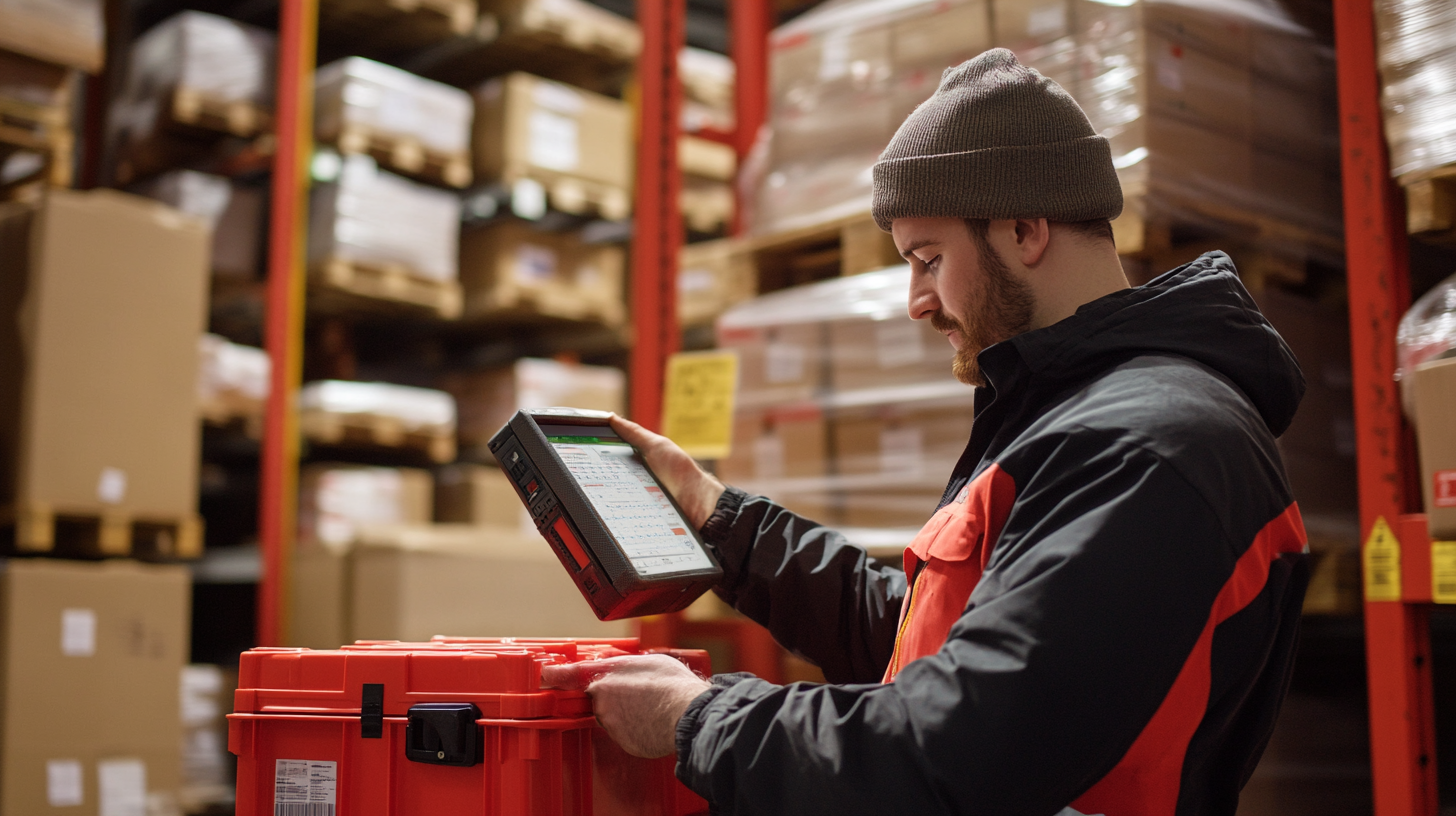A-B-C Blog
5 Essential Insights for Maximizing Efficiency with Case Packer Machines
In today's fast-paced manufacturing landscape, the efficient packing of products is crucial for maintaining competitiveness and meeting customer demands. The Case Packer Machine has emerged as a game-changing solution in this realm, streamlining the packing process and optimizing operational workflows. As industries strive to enhance productivity, understanding the key aspects that contribute to the effective utilization of these machines can lead to significant improvements in efficiency. In this blog, we will explore five essential insights that can help businesses maximize the performance of their Case Packer Machines. By integrating these strategies, manufacturers can reduce downtime, minimize waste, and ultimately achieve a more robust bottom line, ensuring that they stay ahead in an ever-evolving market.

Understanding the Role of Case Packer Machines in Modern Packaging Systems
In today's fast-paced manufacturing environment, the role of case packer machines has become increasingly vital in modern packaging systems. These machines automate the process of packing products into cases, significantly reducing manual labor and streamlining operations. By employing advanced technology, case packers not only enhance speed and efficiency but also ensure consistency and precision in packaging. As companies strive to meet growing consumer demands, incorporating case packer machines into their production lines has emerged as a strategic solution to boost productivity.
Understanding the functionality of case packer machines is crucial for manufacturers looking to optimize their packaging processes. These machines can adapt to various product types and sizes, offering flexibility that traditional packing methods cannot match. Additionally, integrating case packers with other automated systems—such as conveyors and palletizers—creates a seamless workflow that minimizes downtime and maximizes output. As the packaging industry continues to evolve, harnessing the power of case packer machines will be essential for companies aiming to maintain competitive advantages and meet the high standards of today’s market.
5 Essential Insights for Maximizing Efficiency with Case Packer Machines
| Insight | Description | Benefits |
|---|---|---|
| 1. Automation Integration | Integrating case packer machines with existing automated systems to blend operations. | Increased speed and reduced labor costs. |
| 2. Customization Capabilities | Ability to customize machine settings according to product dimensions. | Improved packaging fit and reduced waste. |
| 3. Maintenance Scheduling | Regular maintenance intervals to ensure optimal performance. | Minimized downtime and prolonged equipment life. |
| 4. Data Monitoring | Utilizing sensors and software to monitor machine performance. | Real-time insights for proactive adjustments. |
| 5. Employee Training | Investing in training programs for staff regarding machinery operation. | Enhanced skill levels lead to fewer errors and improved productivity. |
Key Features to Look for in High-Performance Case Packer Machines
When selecting high-performance case packer machines, there are several key features that can significantly enhance efficiency in your packaging operations. First, consider machines equipped with advanced automation capabilities. These systems not only minimize human error but also streamline the entire packing process, allowing for quicker turnaround times. Automation features can include robotics for palletizing, sensors for quality control, and software for real-time monitoring, ensuring your packaging line runs smoothly without unnecessary interruptions.
Another vital aspect is the machine's versatility in handling various packaging formats. High-performance case packers should accommodate different shapes and sizes of products, which is essential for companies that manage diverse product lines. Additionally, easy adjustability and quick-change settings allow operators to switch between product types without extensive downtime, enhancing overall productivity. Finally, energy efficiency is becoming increasingly important; machines designed to consume less power while maintaining performance levels contribute not only to cost savings but also to sustainable operations, aligning with modern environmental standards.
Efficiency Metrics for Case Packer Machines
This chart illustrates key performance metrics for case packer machines, highlighting speed, power consumption, setup time, maintenance frequency, and error rate. These insights are critical for assessing and maximizing machine efficiency.
Best Practices for Optimizing the Setup and Operation of Case Packers
Optimizing the setup and operation of case packer machines is crucial for improving overall efficiency in packaging lines. One of the best practices involves conducting a thorough assessment of the product mix and packaging requirements before the installation. Understanding the dimensions and characteristics of the items being packed ensures that the case packer is configured correctly, ultimately reducing downtime during adjustments and maximizing throughput.
Another key aspect to consider is the training of operators and maintenance personnel. Regular training sessions can help staff become familiar with the machine's functions and troubleshooting methods. Incorporating a preventive maintenance schedule can also enhance performance longevity, minimizing unexpected breakdowns and ensuring smooth operation. Properly trained employees wield a better understanding of how to optimize the machine settings for varying production runs, leading to increased speed and efficiency in handling different cases.
5 Essential Insights for Maximizing Efficiency with Case Packer Machines
This pie chart illustrates the distribution of best practices for optimizing the setup and operation of case packers. Understanding these insights can help improve overall efficiency.
Common Challenges in Using Case Packer Machines and How to Overcome Them
Using case packer machines can significantly enhance the efficiency of packaging operations, but challenges often arise that can hinder performance. A primary concern is the adaptability of these machines to various packaging formats and sizes. To tackle this issue, implementing modular automation platforms can simplify complex processes by allowing operators to reconfigure machines swiftly. This flexibility not only speeds up production but also minimizes downtime associated with equipment changeovers.
Another challenge is maintaining consistent quality during high-speed operations. The integration of advanced technologies such as AI and machine learning into the packaging line can provide real-time monitoring and predictive analytics. These tools enable operators to detect anomalies early and adjust processes accordingly, bolstering quality control. Moreover, as organizations embrace Industry 4.0, the combination of human intellect and AI capabilities is likely to evolve, leading to more streamlined workflows and enhanced productivity within packaging operations.

Measuring Efficiency: Metrics to Track for Case Packer Performance Improvement
When it comes to harnessing the full potential of case packer machines, understanding the right metrics to measure efficiency is crucial. Key performance indicators (KPIs) such as throughput, downtime, and yield provide valuable insights into the operational performance of your case packing systems. Throughput, for instance, measures the number of cases packed within a specific time frame, helping you identify bottlenecks that may hinder productivity. By monitoring this metric, you can make informed adjustments to enhance workflow and ensure your production targets are met.
Downtime is another critical metric that should not be overlooked. This includes both planned and unplanned stoppages that can disrupt the packing process. By tracking the frequency, duration, and reasons for downtime, you can implement strategies to minimize interruptions, thus increasing overall efficiency. Additionally, assessing yield—calculated by comparing the number of acceptable cases produced to the total number of cases packed—offers insights into the effectiveness of your packing process. A high yield indicates good performance, while a low yield may signal issues that require immediate attention. By focusing on these key metrics, manufacturers can continuously improve case packer performance and achieve higher operational efficiency.







